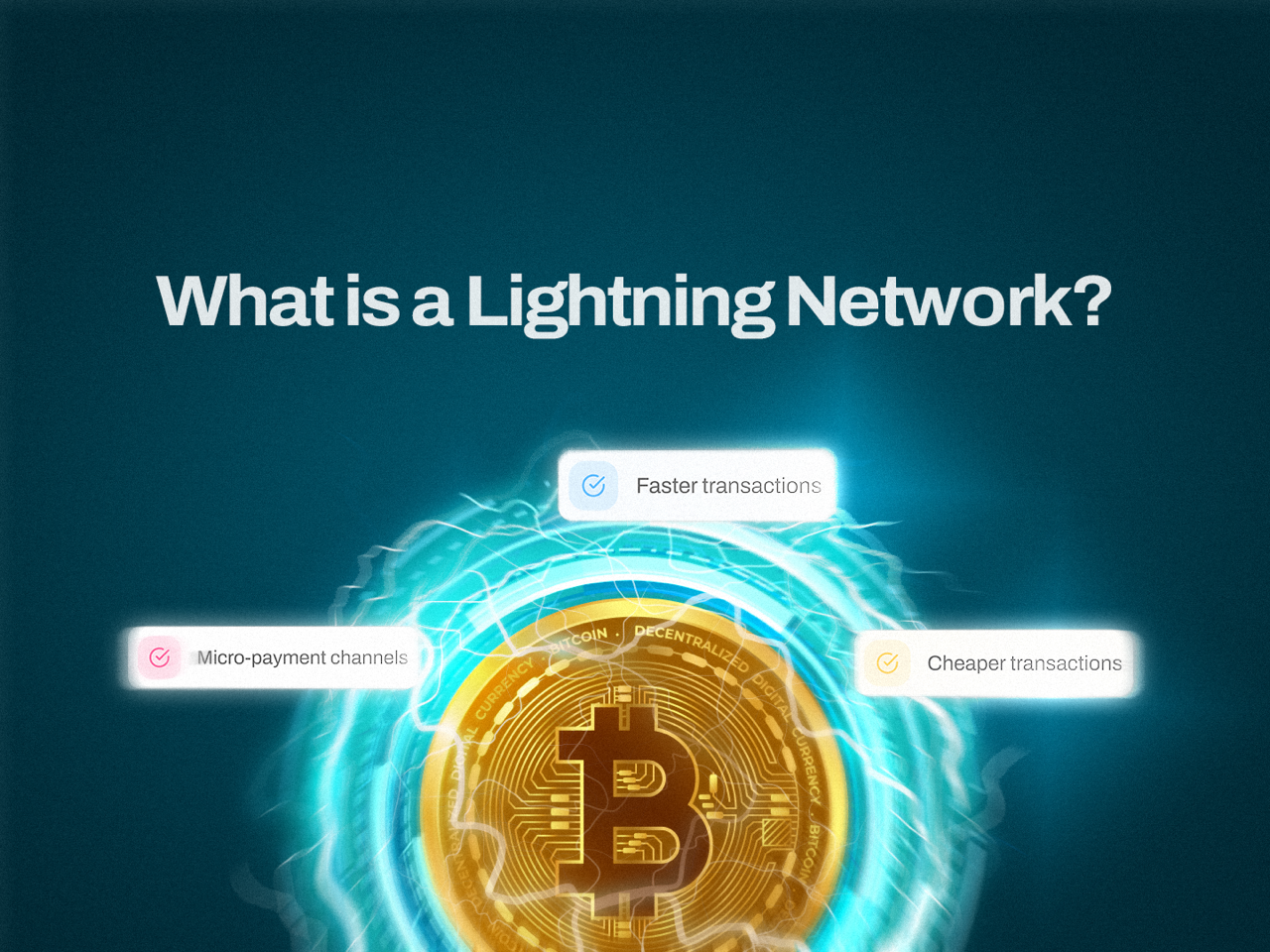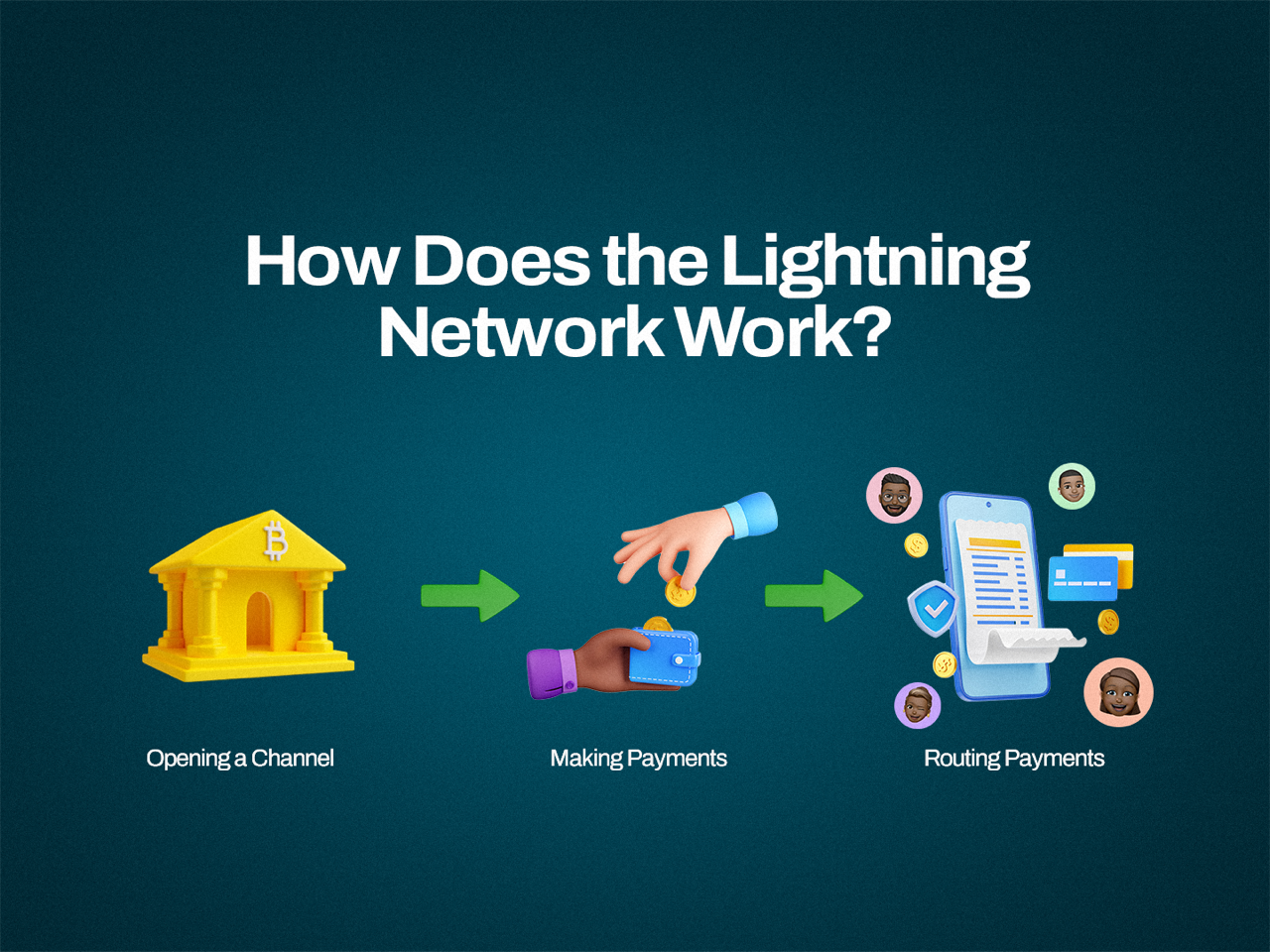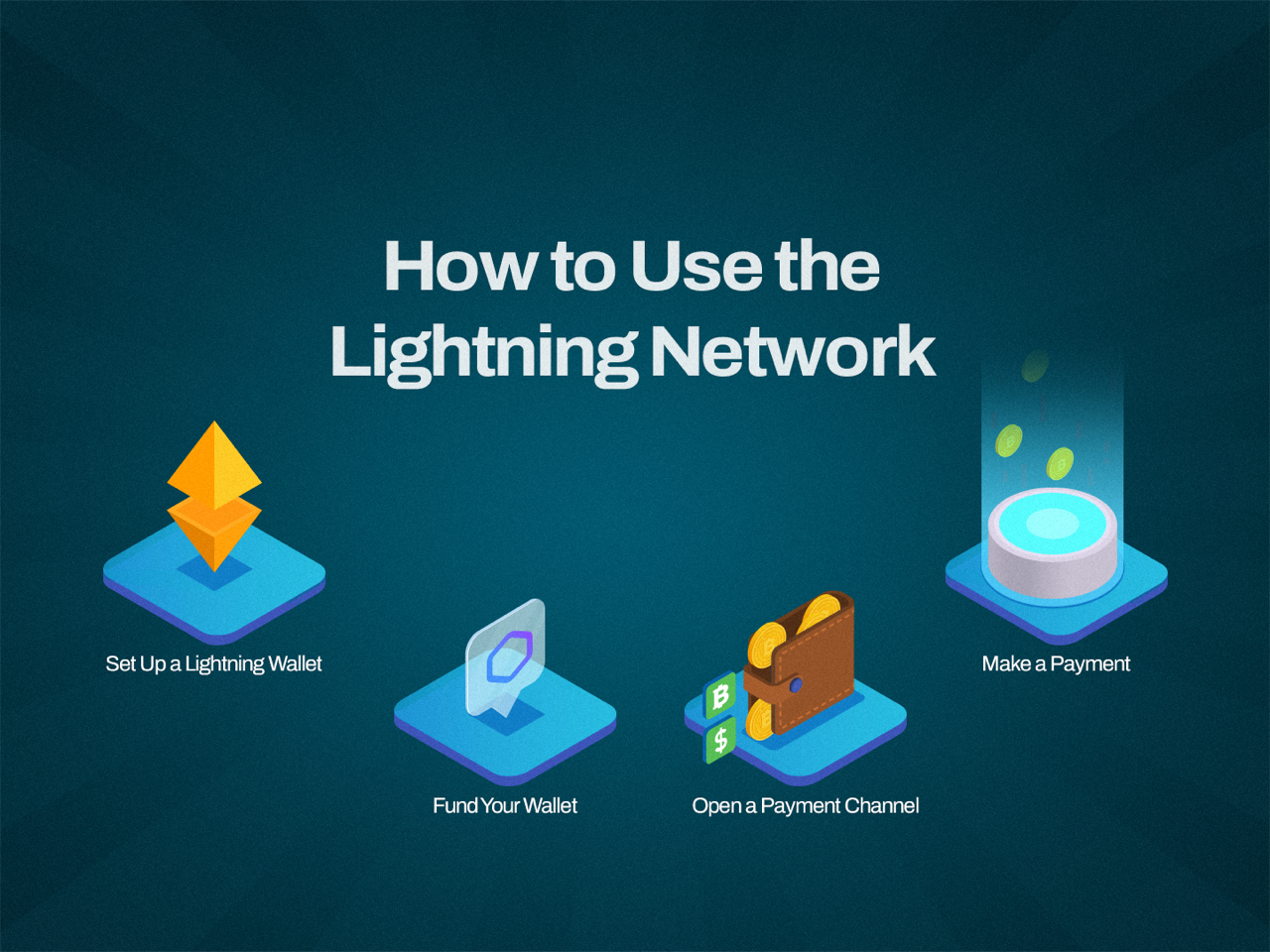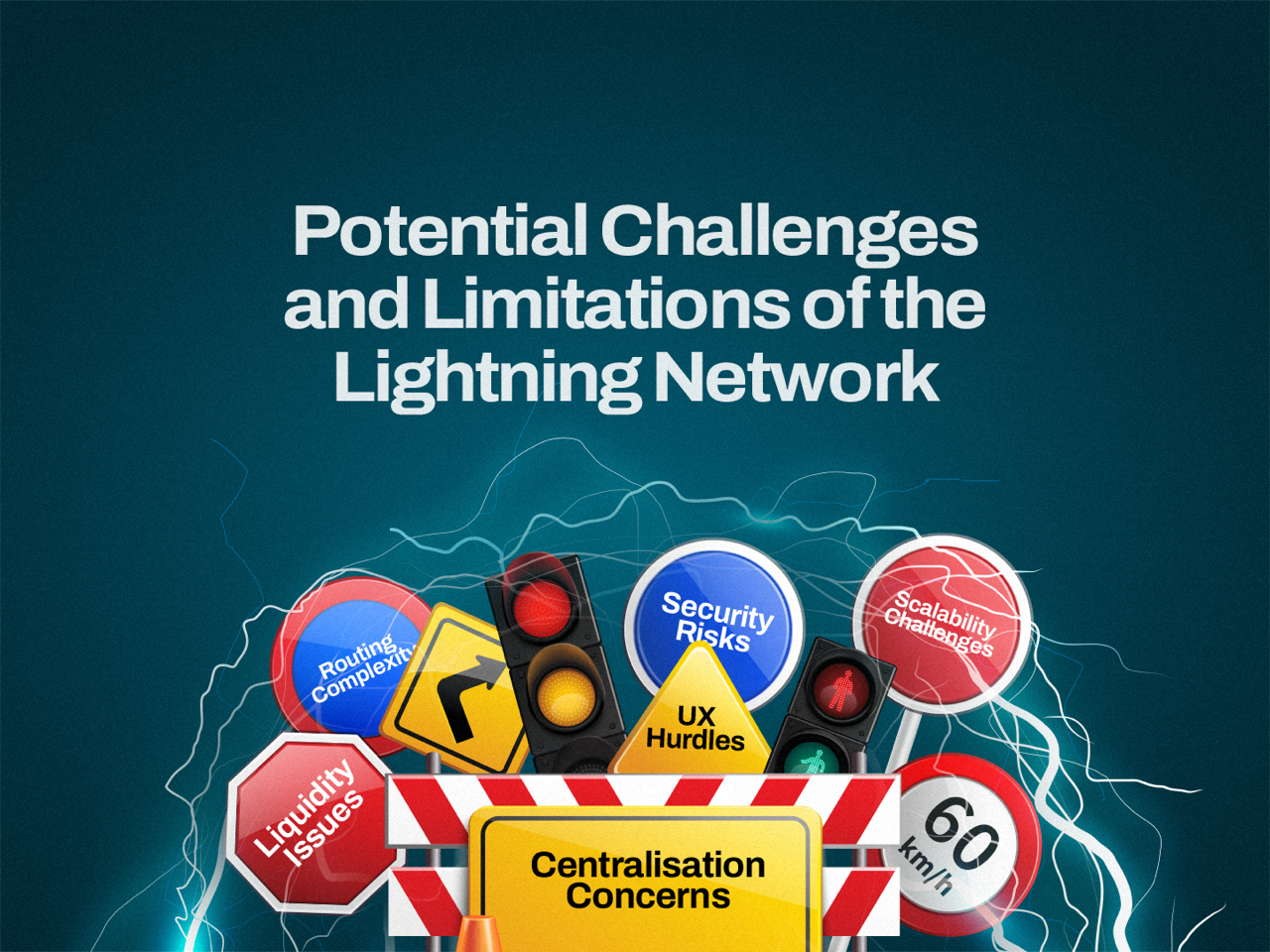A Lightning Network is a system built on top of the Bitcoin (BTC) blockchain that uses micro-payment channels to make transactions faster, cheaper, and more efficient.
Due to the rising popularity of cryptocurrencies like Bitcoin and the increasing number of people who use these digital currencies, the networks that process these transactions can become slow and expensive.
To curb challenges like this, innovations like the Lightning Network were implemented to ensure the continuous efficiency of the blockchain. Though the lightning network may sound like a system erected to regulate the effect of lightning strikes on buildings, it is quite different from that scenario. Although not entirely because, if put into context, we could say that it performs a similar duty for crypto as it is designed to make crypto transactions faster, cheaper, and more efficient. How?
Let’s answer these questions by extensively looking into what the Lightning Network is, how it works, and how it can help your crypto transactions.
What is a Lightning Network?

A Lightning Network is a system built on top of the Bitcoin (BTC) blockchain that uses micro-payment channels to make transactions faster, cheaper, and more efficient. Let’s say you want to make a purchase with Bitcoin. Normally, you would have to wait for the transaction to be confirmed on the blockchain, which can take up to 10 minutes or even longer if the network is busy. This delay happens because every Bitcoin transaction needs to be verified by many computers around the world, which takes time and costs money in the form of transaction fees.
The Lightning Network solves this problem by creating a second layer on the blockchain. It allows you to set up a direct payment channel with someone else, like the person you are making the purchase from. Once this channel is set up, you can make multiple transactions almost instantly and with very low fees. Therefore, the Lightning Network speeds up transactions and reduces costs, making it practical for everyday use.
As of early 2024, the Lightning Network has grown significantly, with over 5,000 nodes and a total network capacity exceeding 5,000 BTC, which shows its increasing adoption and trust within the cryptocurrency community.
How Does the Lightning Network Work?

The Lightning Network works by creating a network of payment channels between users, where each channel is like a private pathway that can be used to send Bitcoin back and forth instantly. Here's a step-by-step process of how it works:
1. Opening a Channel:
To use the Lightning Network, two users first need to open a payment channel. They do this by creating a multi-signature transaction on the Bitcoin blockchain, which requires both of their signatures to spend the funds. This is similar to setting up a joint bank account, where both parties deposit some Bitcoin. This initial transaction is called a "funding transaction."
2. Making Payments:
Once the channel is open, the users can send payments to each other instantly and without additional blockchain transactions. They do this by updating their balances in the channel. For example, if Alice wants to pay John, she will simply adjust the balance in the channel to show that John has more Bitcoin and she has less. These updates are like IOUs that both parties agree on, and they can make as many as they want without waiting for blockchain confirmations.
3. Routing Payments:
The Lightning Network isn't limited to just two people. If Alice wants to pay Mary but doesn't have a direct channel with her, she can route the payment through John if John has a channel with Mary. The network finds the shortest path for the payment, similar to how data packets travel across the internet. This ability to route payments makes the Lightning Network scalable and efficient.
4. Closing a Channel:
At some point, the users will want to close the channel and settle their final balances on the Bitcoin blockchain. To do this, they create a closing transaction that reflects the final agreed-upon balance. This transaction is then broadcast to the blockchain, and the channel is closed. The final balances are recorded on the Bitcoin ledger.
Why Use the Lightning Network?
The Lightning Network is a game-changer for cryptocurrency transactions, especially for Bitcoin, and here’s why:
1. Faster Transactions:
The Lightning Network speeds up transactions. Traditional Bitcoin transactions can take from 10 minutes to over an hour to confirm, depending on network congestion. With the Lightning Network, transactions are almost instant. This is because it processes transactions off the main blockchain, reducing the time needed for confirmations.
2. Lower Fees:
Sending Bitcoin the usual way can sometimes be expensive. Transaction fees can range from a few cents to several dollars, particularly when the network is busy. The Lightning Network reduces these costs significantly, often to just a fraction of a cent. This makes it ideal for small or micro-transactions, like buying a coffee or tipping someone online.
3. Scalability:
Bitcoin’s main blockchain can handle about 7 transactions per second, which isn't enough for mass adoption. The Lightning Network can handle thousands to millions of transactions per second by creating multiple off-chain payment channels. This means it can support a huge number of transactions without slowing down.
4. Enhanced Privacy:
Transactions on the Lightning Network are more private than those on the Bitcoin blockchain. On the main blockchain, anyone can see transaction details. In contrast, the Lightning Network only settles the final balances on the blockchain, keeping individual transactions off the public ledger. This adds a layer of privacy for users.
5. Reduced Network Congestion:
By moving many transactions off the main blockchain, the Lightning Network helps reduce congestion. This means fewer delays and lower fees for everyone, even those not using the Lightning Network.
6. Increased Adoption:
The benefits of the Lightning Network—speed, low fees, scalability, and privacy—make cryptocurrencies more practical for everyday use. This increased practicality encourages more people and businesses to adopt Bitcoin and other cryptocurrencies, driving further growth and innovation in the space.
7. Microtransactions:
The Lightning Network enables microtransactions, which are very small transactions that are not practical on the main Bitcoin network due to high fees and slow processing times. For example, sending a tip to someone online or paying per article on a news website becomes viable with the Lightning Network. This opens up new possibilities for digital payments that were previously not possible.
How to Use the Lightning Network

1. Set Up a Lightning Wallet:
First, you need a Lightning-compatible wallet. BlueWallet, Phoenix, and Wallet of Satoshi are popular options to choose from. Download the Wallet app and follow the instructions to create an account. Make sure to back up your wallet by writing down the recovery phrase; this is vital for recovering your funds if you lose access.
2. Fund Your Wallet:
Next, you need to add Bitcoin to your Lightning wallet. This usually involves sending Bitcoin from an exchange like Obiex or another wallet to your Lightning wallet’s address. Follow the instructions in your wallet app to complete this step. Keep in mind that this initial transaction is on the Bitcoin blockchain, so it may take some time and incur a small fee.
3. Open a Payment Channel:
To start using the Lightning Network, you need to open a payment channel. A payment channel is a private connection between you and another user, allowing you to send and receive Bitcoin instantly. In your wallet app, choose the option to open a channel. You’ll need to specify how much Bitcoin you want to commit to this channel. This Bitcoin will be used for your Lightning transactions.
4. Make a Payment:
With a payment channel open, you can now make payments. When you want to pay someone, you’ll need their Lightning invoice, which is a QR code or a string of text that includes the payment details. In your wallet app, select the option to send a payment, scan the QR code or paste the invoice, and confirm the transaction. The payment is instant and very low-cost, thanks to the Lightning Network.
5. Close the Channel:
If you no longer need the payment channel, you can close it. Closing a channel will finalise the transactions and record the final balances on the Bitcoin blockchain. In your wallet app, find the option to close the channel and follow the instructions. Once the channel is closed, the remaining Bitcoin will be available in your wallet.
Examples of Crypto Transactions Powered by the Lightning Network
1. Coffee Purchase:
One of the most relatable examples of how the Lightning Network can improve your crypto transactions is buying a cup of coffee. For example, in 2021, the popular coffee giant, Starbucks, started accepting Bitcoin payments through the Lightning Network. Customers could pay for their coffee in under seconds with minimal transaction fees, making the process as quick and smooth as paying with cash or a credit card.
2. Online Gaming Payments:
Online gaming often requires quick and frequent microtransactions. Using the Lightning Network, gamers can easily pay for in-game items or subscriptions without being slowed down by network congestion or high fees. This seamless experience encourages more players to participate in gaming ecosystems, boosting engagement and revenue for game developers.
3. Cross-Border Remittances:
Sending money across borders can be costly and time-consuming, especially for those who rely on remittances for their livelihoods. However, with the Lightning Network, individuals can transfer funds across borders almost instantly and with minimal fees. This innovation has the potential to transform the remittance industry, providing a lifeline for families in developing countries by reducing the financial burden of sending money home.
4. E-commerce Transactions:
Traditional online shopping often involves waiting for payment confirmations and going through complex checkout processes. With the Lightning Network, e-commerce transactions become faster and more efficient. Customers can make instant payments for their purchases, and merchants can receive funds without worrying about lengthy settlement times. This improved user experience is driving adoption among both consumers and businesses, paving the way for a more seamless online shopping experience.
5. Micropayments for Content:
Content creators, such as bloggers, artists, and musicians, often struggle to monetise their work through traditional payment methods due to high fees and minimum transaction amounts. The Lightning Network enables microtransactions, allowing consumers to pay small amounts for access to premium content. This model benefits both creators, who can earn revenue from their work more easily, and consumers, who can support their favourite creators without breaking the bank.
Potential Challenges and Limitations of the Lightning Network

Although the Lightning Network offers exciting possibilities for faster and cheaper cryptocurrency transactions, we must also consider its potential challenges and limitations.
1. Centralisation Concerns:
While the Lightning Network aims to decentralise transactions, there's a risk that larger nodes could become central points of control. This could undermine the network's original purpose of decentralisation and potentially lead to censorship or control over transactions.
2. Liquidity Issues:
One of the main challenges of the Lightning Network is ensuring there's enough liquidity in the network to enable transactions effectively. Liquidity refers to the availability of funds in various channels. If certain channels lack sufficient funds, users may experience delays or higher fees when attempting to route transactions.
3. Routing Complexity:
Routing transactions through the Lightning Network can be complex, especially as the network grows. Finding the most efficient route for a transaction requires considering various factors, such as channel capacity, fees, and network topology. As the number of nodes and channels increases, the complexity of routing also increases, possibly leading to longer confirmation times or failed transactions.
4. Security Risks:
While the Lightning Network contains various security measures, such as hashed timelock contracts (HTLCs) and penalty mechanisms, there's still a risk of security vulnerabilities. For example, if a user's private keys are compromised, attackers could steal funds from their Lightning Network wallet. Also, since Lightning Network transactions are off-chain, they are naturally less secure than on-chain transactions, as they rely on the security of the underlying blockchain.
5. Scalability Challenges:
Although the Lightning Network is designed to improve scalability by processing transactions off-chain, it still faces scalability challenges. As the number of users and transactions on the network increases, there may be limitations on the number of transactions that can be processed simultaneously. This could result in congestion and higher fees during peak usage periods.
6. User Experience Hurdles:
For the average user, setting up and using the Lightning Network may require technical expertise beyond their capabilities. This could hinder the widespread adoption of the technology, as many users may find it challenging to navigate the complications of opening channels, managing liquidity, and troubleshooting potential issues.
Takeaway
- Lightning Networks revolutionise crypto transactions by speeding them up and reducing fees, making them more accessible and efficient for everyone.
- Through a network of payment channels, Lightning enables instant, low-cost transactions, solving scalability issues faced by cryptocurrencies like Bitcoin.
- With Lightning, users can send micropayments as small as a fraction of a cent, opening doors to new possibilities for online transactions and digital commerce.
- This technology has immense potential to reshape the future of finance, promoting the widespread adoption of cryptocurrencies for everyday payments.
FAQs
Q1. What is the Lightning Network?
A1. The Lightning Network is a second-layer technology built on top of a blockchain, like Bitcoin, to facilitate faster and cheaper transactions.
Q2. How does the Lightning Network make transactions faster?
A2. It processes transactions off-chain through payment channels, which allows for almost instant transaction speeds.
Q3. Are transactions on the Lightning Network secure?
A3. Yes, transactions are secure, but since the technology is still relatively new, it’s important to stay informed about any potential risks.
Q4. Can I use the Lightning Network for small payments?
A4. Absolutely! The Lightning Network is ideal for microtransactions due to its low fees.
Q5. Do I need a lot of Bitcoin to use the Lightning Network?
A5. No, you only need enough to fund your payment channel. You can open a channel with a small amount of Bitcoin.
Q6. How much are the fees on the Lightning Network?
A6. Fees are typically less than one cent, much lower than the fees on the main Bitcoin network.
Q7. What happens if a payment channel runs out of funds?
A7. If a channel runs out of funds, you can close it and open a new one with more funds.
Q8. Can I send money to someone if I don’t have a direct channel with them?
A8. Yes, the Lightning Network routes payments through other users’ channels, so you don’t need a direct channel.
Q9. Is the Lightning Network only for Bitcoin?
A9. While it was originally designed for Bitcoin, other cryptocurrencies are also exploring similar second-layer solutions.
Q10. How do I start using the Lightning Network?
A10. You can start by using a Lightning-compatible wallet and funding a payment channel. There are several user-friendly wallets available that make the process straightforward.
This article does not contain investment advice or recommendations. Every investment and trading move involves risk, and readers should conduct their own research when making a decision.
